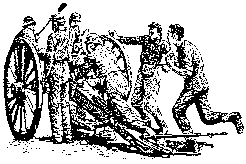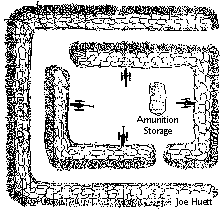
Two brothers, James and William Daniel (pictured), were the first to hold official land entries for the Piedmont area from August 1853 to 1856. Back then it was not known as Piedmont but as the start of a homestead site known as Danielsville. The brothers were born and raised as farmers and just having fought in the Spanish - American War purchased the property in the hopes of working the land for crops.
Whereas James Daniel's property was suited for farming, William's property was not. Lying along the eastern side of McKenzie Creek most of it was very hilly and marshy. So, William unable to use his property as farmland turned to the business world instead and decided to open up a general store
Whereas James Daniel's property was suited for farming, William's property was not. Lying along the eastern side of McKenzie Creek most of it was very hilly and marshy. So, William unable to use his property as farmland turned to the business world instead and decided to open up a general store
.
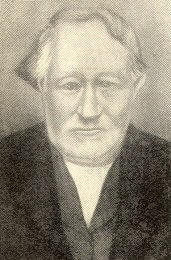
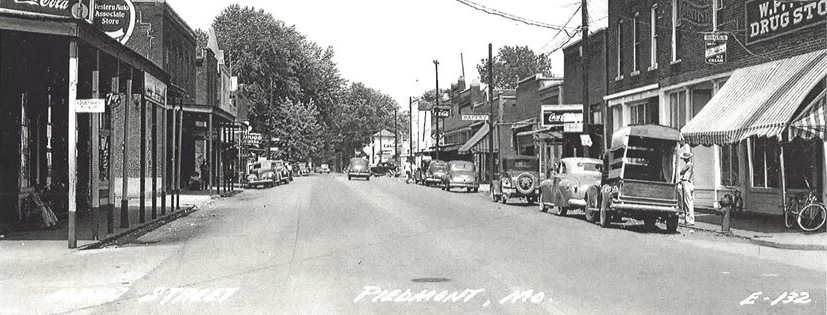
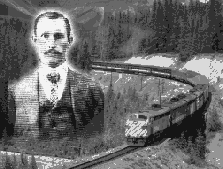
As William Daniel's store became established in the area so did the village of Danielsville. Businesses were attracted to the area because the land was inexpensive and because many customers were already there due to the general store.
A school called the Blue Moon Schoolhouse was established and also held the first church services in the area. A post office became official in 1855 along with a stage coach service running from Ironton to Doniphan. For the next four years Danielsville grew at a steady pace and the population reached almost three hundred.
A school called the Blue Moon Schoolhouse was established and also held the first church services in the area. A post office became official in 1855 along with a stage coach service running from Ironton to Doniphan. For the next four years Danielsville grew at a steady pace and the population reached almost three hundred.
The Daniel Brothers and Danielsville
Building The Lake
One of the largest single events that took place in the history of Piedmont, next to the arrival of the railroad, was the official opening of the Clearwater Lake Dam. Held on Memorial Day, May 30, 1948, the event was witnessed by various state and federal officials and top officers in the Corps of Engineers Little Rock District. It was even attended by Lieutenant Governor James T. Blair, Jr..
Construction of the outlet works was initiated in May 1940 and was completed by March 1942. Due to work stoppage during World War II, the overall project was not completed until September 1958.
Fed by the Black River, Clearwater lake is located at river mile 257.4, and lies within 6 miles of the City of Piedmont. With a total of 898 square miles of drainage above the dam, the entire cost of construction was a mere $ 9,120,000. Stretching over a length of 4,225 feet, the maximum height above the stream bed is 154 feet.
A whopping 5,500,000 cubic yards of earth was used to make the dam. Elevation to the top is 608 feet. The emergency spillway is 190 feet long with a crest if 567 feet. The spillway tunnel length is 1,771 feet long with a diameter of 23 feet.
Clearwater Lake has 1,630 acres at the top of the conservation pool during the winter months. The flood pool top is 10,350 surface acres with a total storage capacity of over 413,000 acre feet of water.
Although Clearwater Lake's original purpose was allotted for flood control, today it has become one of the largest tourist attractions through out Southeast Missouri. Little Rock Corps of Engineers estimate that over a million people per year travel to Clearwater to enjoy camping, canoeing, boating, fishing, swimming and just plain relaxing.
Construction of the outlet works was initiated in May 1940 and was completed by March 1942. Due to work stoppage during World War II, the overall project was not completed until September 1958.
Fed by the Black River, Clearwater lake is located at river mile 257.4, and lies within 6 miles of the City of Piedmont. With a total of 898 square miles of drainage above the dam, the entire cost of construction was a mere $ 9,120,000. Stretching over a length of 4,225 feet, the maximum height above the stream bed is 154 feet.
A whopping 5,500,000 cubic yards of earth was used to make the dam. Elevation to the top is 608 feet. The emergency spillway is 190 feet long with a crest if 567 feet. The spillway tunnel length is 1,771 feet long with a diameter of 23 feet.
Clearwater Lake has 1,630 acres at the top of the conservation pool during the winter months. The flood pool top is 10,350 surface acres with a total storage capacity of over 413,000 acre feet of water.
Although Clearwater Lake's original purpose was allotted for flood control, today it has become one of the largest tourist attractions through out Southeast Missouri. Little Rock Corps of Engineers estimate that over a million people per year travel to Clearwater to enjoy camping, canoeing, boating, fishing, swimming and just plain relaxing.
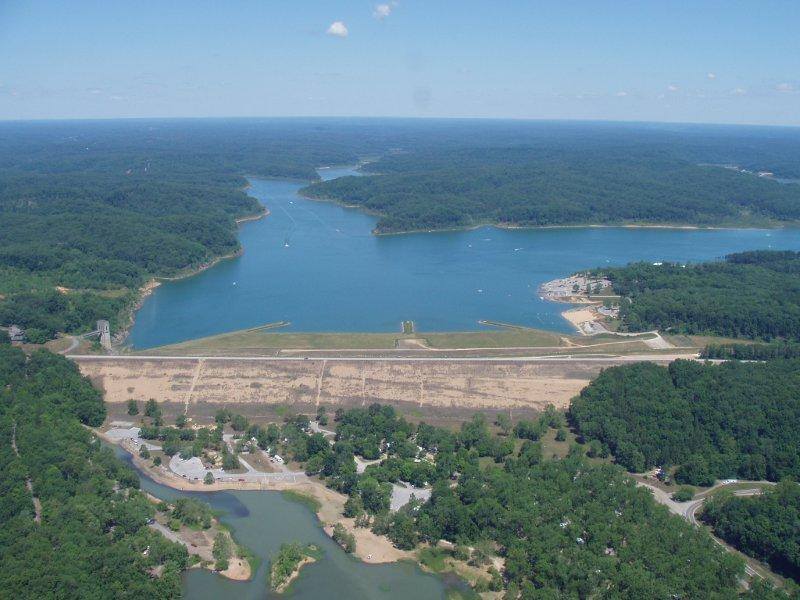
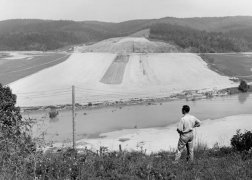
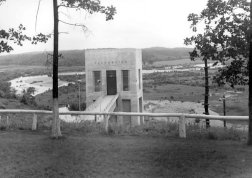
Pictures courtesy of the US Army Corp of Engineers. For more information on Clearwater Lake and other historical photos visit their website at:
The First Train
The following account regarding the arrival of the first train in Piedmont is taken directly from chapter three of, "The Story of Piedmont" written by Albion and Velma Daniel, Copyright ©, 1955 - published by Stivers and Ellinghouse. A copy can be found at the Piedmont Public Library
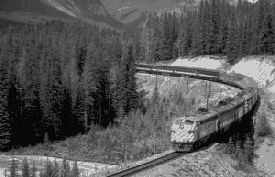
From 1869 there had been activity here looking to the coming of the road. Work trains had been operating as far south as Piedmont since early in 1870 and construction crews living here were working feverishly to extend the line to Arkansas state line, a requirement before regularly scheduled service could be started.
By mid-September, 1871, work trains were operating all the way to the state line but official certification of the completion of the road through Missouri was withheld until the first part of October. The first regularly scheduled train was operated all the way from St. Louis to Poplar Bluff on October 10 of that year.
Handbills announcing the coming of this first regularly scheduled train had been printed in St. Louis and circulated in every town along the rail line between Iron Mountain and Poplar Bluff. Demonstrations of various kinds had been arranged for in several towns and an arrival time for the train at each point announced.
By mid-September, 1871, work trains were operating all the way to the state line but official certification of the completion of the road through Missouri was withheld until the first part of October. The first regularly scheduled train was operated all the way from St. Louis to Poplar Bluff on October 10 of that year.
Handbills announcing the coming of this first regularly scheduled train had been printed in St. Louis and circulated in every town along the rail line between Iron Mountain and Poplar Bluff. Demonstrations of various kinds had been arranged for in several towns and an arrival time for the train at each point announced.
According to the schedule, the train would arrive at Piedmont at 9 in the morning of Oct. 10, 1871. A speaker's stand was set up near the depot and a plot of ground smoothed for the use of the band that would come along the train. Excursion rates to Poplar Bluff and return were announced and many tickets were sold.
Due to various operating delays, one of them being the running out of cordwood for fuel for the engine at Des Arc that necessitated the bringing of more wood from Gads Hill on push cars, the train did not arrive here until 2 in the afternoon.
That first train consisted of a small, diamond-stacked, wood burning locomotive; one baggage car; one express car; and two coaches, all the cars being open platform type. The train was crowded for the rear coach, -the official car, -carried not only the band; the president and vice president of the railroad, Jay Gould and Thomas Allen; Governor Benjamin Gratz Brown of Missouri and members of his staff; but also food and drink for the official party.
The other coach was for passengers, some of whom also became mixed in with the official party at various stops along the line after the liquid refreshments began to take effect and class and other distinctions fell crashing. During the more than two-hour delay at Des Ark it is reported that Allen went among the passengers in the public coach inviting the men passengers to join the official party and partake of the refreshments.
Many of them did, and it appears the members of the crew also were invited or came along without invitation. Probably that was before the days of Standard Rule G, for it appears that when the train did arrive at Piedmont everyone on it, -the men, at least, -was in a mellow mood.
When the train arrived at the Piedmont depot, the engine was detached from it and moved a short distance down the track to keep smoke and hot ashes from falling on the gathered celebrants. There was some mistake of judgment made in the placing of the engine which resulted in considerable confusion a little later.
But there was confusion right at the start. The band was unloaded and grouped, a little bit raggedly, it is reported, on the cleared space and started the music promptly. From reports coming down to us from more than 80 years ago it appears the music was at least loud if not entirely harmonious. But no one cared, least of all the Governor of Missouri who was experiencing exceeding difficulty.
It appears Governor Brown had prepared several speeches for the several occasions of train stoppage of that day. Due, no doubt, to the many stops made, the large number of people he was required to meet and greet, and possibly, to some misjudgment as to the potency of the alcoholic refreshments taken he read the speeches at various stops, then discarded them.
At Piedmont it appeared that somewhere along the line the wrong speech had been discarded. the Governor was sure it had not been, for he had been reading and practicing it at Des Arc. But it could not be found and the Governor could not remember what it was he wanted to say at Piedmont.
The Official party and members of the crew, who had heard the practice session of it at Des Arc, were called together to help the Governor remember. No one could be of much help. In the meantime the band played and played; the crowd grew restless.
And then the speech was found. The conductor had it; had picked it up with other papers outside the station at Des Arc.
It is unfortunate no one now is living who remembers what the Governor said that day. One living person who was present remembers he started to read the speech, found some trouble that way and finally threw it to the winds and just talked. this person says it was a good speech but he doesn't remember what was said.
From the surrounding circumstances it seems some oratory that well might have been immortal was lost that day.
During the course of the Governor's oration the confusion became even greater; so great, in fact, he gave up and quit talking until the immediate trouble could be controlled. It has been mentioned that the engine, a quite distinguished little locomotive named "Helen Gould" and bearing the number, No. 1, had been set some distance away from the train.
It just happened that it had been left sitting just under the water tank, a wooden structure; and sparks from the fire had set the tank on fire. Since fires almost always are more interesting than the speeches of politicians, the Governor was forced to wait for the end of the more thrilling excitement.
This was the first time a railroad train brought a high public official to Piedmont and from almost every standpoint one of the most successful of such visits. In later years, Governors and former Governors; Senators and former Senators, and even candidates for President of the United States came here by train. But all of these filled speaking engagements at places other than the railroad depot.
At one time a President of the United States was scheduled to speak from the rear platform of a train here, or so local members of his party believed. The train was due to arrive some time after dark and quite a delegation was at the station to meet it and hear the President. But something went wrong with that deal also.
Alas the train did not stop!
Despite the lateness of the hour, -it was nearly 4 in the afternoon, -when all was ready to proceed southward a large number of Piedmont folk rode it on to Poplar Bluff. Two more stops were made for speech making, one at Mill Spring and one at Williamsville. These took up more time and the return train did not get the Piedmont excursionists home until well after midnight.
But to those who made the trip, the loss of sleep was well paid for by the thrill of riding that first regularly scheduled train. Others who missed their chance regretted it more and more as the years went by.
Truly Oct. 10, 1871 was a great day in and for Piedmont and one that remained in memory as long as life continued for a great many Piedmontians.
Due to various operating delays, one of them being the running out of cordwood for fuel for the engine at Des Arc that necessitated the bringing of more wood from Gads Hill on push cars, the train did not arrive here until 2 in the afternoon.
That first train consisted of a small, diamond-stacked, wood burning locomotive; one baggage car; one express car; and two coaches, all the cars being open platform type. The train was crowded for the rear coach, -the official car, -carried not only the band; the president and vice president of the railroad, Jay Gould and Thomas Allen; Governor Benjamin Gratz Brown of Missouri and members of his staff; but also food and drink for the official party.
The other coach was for passengers, some of whom also became mixed in with the official party at various stops along the line after the liquid refreshments began to take effect and class and other distinctions fell crashing. During the more than two-hour delay at Des Ark it is reported that Allen went among the passengers in the public coach inviting the men passengers to join the official party and partake of the refreshments.
Many of them did, and it appears the members of the crew also were invited or came along without invitation. Probably that was before the days of Standard Rule G, for it appears that when the train did arrive at Piedmont everyone on it, -the men, at least, -was in a mellow mood.
When the train arrived at the Piedmont depot, the engine was detached from it and moved a short distance down the track to keep smoke and hot ashes from falling on the gathered celebrants. There was some mistake of judgment made in the placing of the engine which resulted in considerable confusion a little later.
But there was confusion right at the start. The band was unloaded and grouped, a little bit raggedly, it is reported, on the cleared space and started the music promptly. From reports coming down to us from more than 80 years ago it appears the music was at least loud if not entirely harmonious. But no one cared, least of all the Governor of Missouri who was experiencing exceeding difficulty.
It appears Governor Brown had prepared several speeches for the several occasions of train stoppage of that day. Due, no doubt, to the many stops made, the large number of people he was required to meet and greet, and possibly, to some misjudgment as to the potency of the alcoholic refreshments taken he read the speeches at various stops, then discarded them.
At Piedmont it appeared that somewhere along the line the wrong speech had been discarded. the Governor was sure it had not been, for he had been reading and practicing it at Des Arc. But it could not be found and the Governor could not remember what it was he wanted to say at Piedmont.
The Official party and members of the crew, who had heard the practice session of it at Des Arc, were called together to help the Governor remember. No one could be of much help. In the meantime the band played and played; the crowd grew restless.
And then the speech was found. The conductor had it; had picked it up with other papers outside the station at Des Arc.
It is unfortunate no one now is living who remembers what the Governor said that day. One living person who was present remembers he started to read the speech, found some trouble that way and finally threw it to the winds and just talked. this person says it was a good speech but he doesn't remember what was said.
From the surrounding circumstances it seems some oratory that well might have been immortal was lost that day.
During the course of the Governor's oration the confusion became even greater; so great, in fact, he gave up and quit talking until the immediate trouble could be controlled. It has been mentioned that the engine, a quite distinguished little locomotive named "Helen Gould" and bearing the number, No. 1, had been set some distance away from the train.
It just happened that it had been left sitting just under the water tank, a wooden structure; and sparks from the fire had set the tank on fire. Since fires almost always are more interesting than the speeches of politicians, the Governor was forced to wait for the end of the more thrilling excitement.
This was the first time a railroad train brought a high public official to Piedmont and from almost every standpoint one of the most successful of such visits. In later years, Governors and former Governors; Senators and former Senators, and even candidates for President of the United States came here by train. But all of these filled speaking engagements at places other than the railroad depot.
At one time a President of the United States was scheduled to speak from the rear platform of a train here, or so local members of his party believed. The train was due to arrive some time after dark and quite a delegation was at the station to meet it and hear the President. But something went wrong with that deal also.
Alas the train did not stop!
Despite the lateness of the hour, -it was nearly 4 in the afternoon, -when all was ready to proceed southward a large number of Piedmont folk rode it on to Poplar Bluff. Two more stops were made for speech making, one at Mill Spring and one at Williamsville. These took up more time and the return train did not get the Piedmont excursionists home until well after midnight.
But to those who made the trip, the loss of sleep was well paid for by the thrill of riding that first regularly scheduled train. Others who missed their chance regretted it more and more as the years went by.
Truly Oct. 10, 1871 was a great day in and for Piedmont and one that remained in memory as long as life continued for a great many Piedmontians.
Building The Railroad
Returning later that year Thomas Allen was fortunate to work out a deal with William Daniel. William purchased the property from his brother and then held the note on the property. Allen divided up the acreage into business lots who in turn sold it at a price that was profitable to both Thomas and William. Located across the McKenzie Creek from Danielsville, Allen renamed this new town Piedmont.
Hence the railroad rush of 1871 had started. Construction crews reached the city and the economy boomed with railroad workers, farmers and new businesses all flocking to the area. Almost overnight Piedmont was up and running at full speed. The only thing the newly finished rail needed now was a train.
Hence the railroad rush of 1871 had started. Construction crews reached the city and the economy boomed with railroad workers, farmers and new businesses all flocking to the area. Almost overnight Piedmont was up and running at full speed. The only thing the newly finished rail needed now was a train.
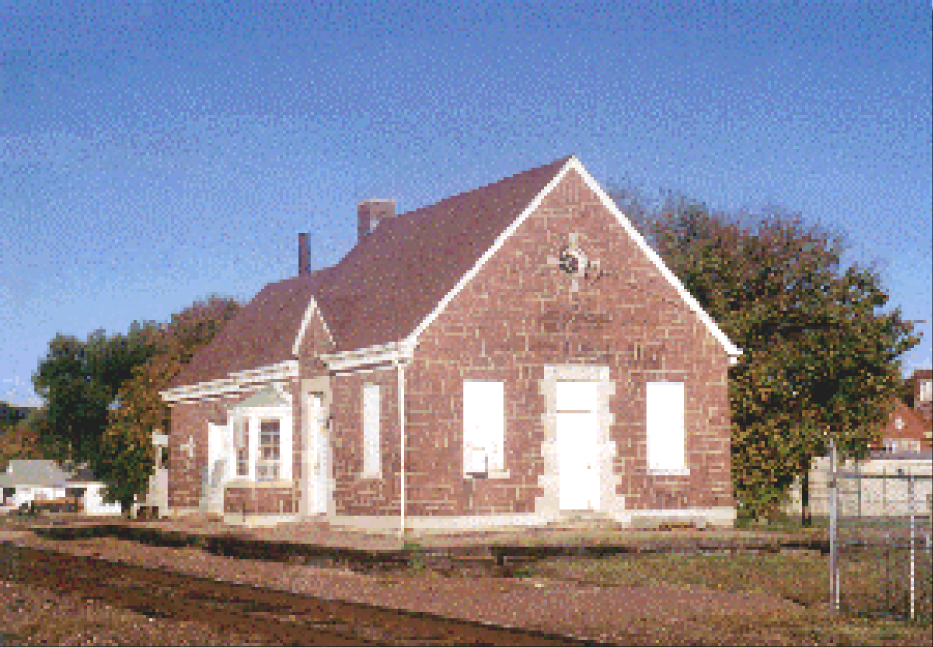
The railroad played a major role in the development of Piedmont bringing supplies to and from St. Louis, the region and to the south.
The second major turning point in the destiny of Piedmont occurred in 1868. From New York a decision was handed down to extend the track of the St. Louis Iron Mountain and Southern railway all the way to the Arkansas state line.
The initial route of the railway changed several times. But in 1871, Thomas Allen the Vice-president of the railroad company came to Danielsville hoping to make a real-estate deal to monopolize upon the arrival of the train. He contacted the Daniel brothers. The property Allen wanted to purchase belonged to James Daniel who found the offer too risky.
Building the Railroad
The second major turning point in the destiny of Piedmont occurred in 1868. From New York a decision was handed down to extend the track of the St. Louis Iron Mountain and Southern railway all the way to the Arkansas state line.
The initial route of the railway changed several times. But in 1871, Thomas Allen the Vice-president of the railroad company came to Danielsville hoping to make a real-estate deal to monopolize upon the arrival of the train. He contacted the Daniel brothers. The property Allen wanted to purchase belonged to James Daniel who found the offer too risky.
Building the Railroad
The Battle of Ft. Benton
The following excerpts come from the pamphlet "Who Can Save Fort Benton", for the Fort Benton Project and sponsored by the Wayne County Historical Society (WCHS).
This is the artist, Joe Huett's conception of how Fort Benton may have looked. Fort Benton is a Civil War Fort, built by Union troops on the hill behind the old school in Patterson, Missouri, between 1861-1863. The Fort measures about 150 feet square and is similar to Fort Davidson in Pilot Knob. The internal packed earth walls may have been 5 foot high using 2 inch thick vertical planks on the inside. Outer walls were of packed earth, about 5 feet high and 5 feet thick. Gunny sacks filled with earth topped the wall (or parapet). Along the inner walls steps led up to platforms, where riflemen knelt to fire. The powder magazine, a wooden roofed dirt cellar, may have been Northeast of the center of the Fort.
A Short History About Fort Benton - The Civil War began at 4:30 a.m., April 12th, 1861, when the first Confederate shell smashed into Fort Sumter. The bloody war that followed cost the lives of 600,000 men. The issue of slavery divided states, nationalities, neighbors and even families.
Though Wayne County was always pro Confederate, the Union army established the first outpost and telegraph line between the Arkansas border and Pilot Knob in the strategic area in Wayne County known as 'Patterson Valley'. they used a hill south of headquarters as a lookout point. They could survey the valley in all directions. The soldiers named it 'Fort Hill'.
A Short History About Fort Benton - The Civil War began at 4:30 a.m., April 12th, 1861, when the first Confederate shell smashed into Fort Sumter. The bloody war that followed cost the lives of 600,000 men. The issue of slavery divided states, nationalities, neighbors and even families.
Though Wayne County was always pro Confederate, the Union army established the first outpost and telegraph line between the Arkansas border and Pilot Knob in the strategic area in Wayne County known as 'Patterson Valley'. they used a hill south of headquarters as a lookout point. They could survey the valley in all directions. The soldiers named it 'Fort Hill'.
In 1863, Federal Brigadier General William P. Benton oversaw completion of the fort at Patterson. Afterwards, it was named Fort Benton. Later that year they built Fort Davidson at Pilot Knob.
The Union Headquarters at Patterson served as dispatch center for orders from Fort Davidson and Barnesville. Sometimes there were thousands of troops quartered in the parade grounds.
There were two battles at the fort; the first in April of 1863, the second in September of 1864.
The First Raid - In his report, confederate General Marmaduke said his command consisted of 5,000 men, 8 old pieces of field artillery and 2 light mountain pieces. Of the 5,000 men, only 3,800 were armed. Their arms consisted of shotguns and Enfield, Mississippi or squirrel rifles. Marmaduke planned to capture the regiment at Patterson and then strike Bloomfield. Four days before the battle, Federal General Davidson had telegraphed Federal Colonel Edwin Smart at Fort Benton to fall back to Pilot Knob if attacked in force. So, when part of Marmaduke's command disobeyed instructions for a silent approach and used artillery, Smart, hearing the cannon, quickly loaded his wagons with weapons and equipment and escaped to Pilot Knob. Marmaduke took the fort, but later returned to Arkansas leaving the Union Army in control of Wayne County.
The Second Raid - Confederate General Shelby in his report says: "I pushed on then rapidly for Patterson,...and on the morning of the 22nd., I surrounded and charged in upon the town. Its garrison, hearing of my advance, retreated hastily, but not before many were captured and killed, and some supplies were taken. All the government part of Patterson was destroyed, together with its strong and ugly fort."
The dead were buried in unmarked graves in the Northeast corner of the Patterson cemetery. The local story is that on the night of September 22nd., men in tattered gray uniforms, local citizens and men in new blue uniforms met in the woods and traded news - most of it bad. Next day, men of the blue and the gray rejoined their units and marched to their deaths in the holocaust at Pilot Knob
The Union Headquarters at Patterson served as dispatch center for orders from Fort Davidson and Barnesville. Sometimes there were thousands of troops quartered in the parade grounds.
There were two battles at the fort; the first in April of 1863, the second in September of 1864.
The First Raid - In his report, confederate General Marmaduke said his command consisted of 5,000 men, 8 old pieces of field artillery and 2 light mountain pieces. Of the 5,000 men, only 3,800 were armed. Their arms consisted of shotguns and Enfield, Mississippi or squirrel rifles. Marmaduke planned to capture the regiment at Patterson and then strike Bloomfield. Four days before the battle, Federal General Davidson had telegraphed Federal Colonel Edwin Smart at Fort Benton to fall back to Pilot Knob if attacked in force. So, when part of Marmaduke's command disobeyed instructions for a silent approach and used artillery, Smart, hearing the cannon, quickly loaded his wagons with weapons and equipment and escaped to Pilot Knob. Marmaduke took the fort, but later returned to Arkansas leaving the Union Army in control of Wayne County.
The Second Raid - Confederate General Shelby in his report says: "I pushed on then rapidly for Patterson,...and on the morning of the 22nd., I surrounded and charged in upon the town. Its garrison, hearing of my advance, retreated hastily, but not before many were captured and killed, and some supplies were taken. All the government part of Patterson was destroyed, together with its strong and ugly fort."
The dead were buried in unmarked graves in the Northeast corner of the Patterson cemetery. The local story is that on the night of September 22nd., men in tattered gray uniforms, local citizens and men in new blue uniforms met in the woods and traded news - most of it bad. Next day, men of the blue and the gray rejoined their units and marched to their deaths in the holocaust at Pilot Knob
.
Why All The Ruckus About Fort Benton? Because Fort Benton, Located at Patterson in Wayne County, was one of the important sites of North/South military action.
Mr. Roy C. Payton, the first president of the Historical Society, wanted to purchase the property and make it a park-like setting where people from all over could come and discover what a beautiful, historic area Patterson/Ft. Benton really is.
Mr. Payton's dream did not materialize as cancer took his life in 1992. At this time Mrs. Linda (Waites) Lunyou was ;elected as president and began working toward the purchase of the old fort. A committee was formed with Mr. Petit Croy as Chairman and all worked doing benefits, auctions and donations and the property was purchased and is now on the National Register of Historic Places.
Mr. Roy C. Payton, the first president of the Historical Society, wanted to purchase the property and make it a park-like setting where people from all over could come and discover what a beautiful, historic area Patterson/Ft. Benton really is.
Mr. Payton's dream did not materialize as cancer took his life in 1992. At this time Mrs. Linda (Waites) Lunyou was ;elected as president and began working toward the purchase of the old fort. A committee was formed with Mr. Petit Croy as Chairman and all worked doing benefits, auctions and donations and the property was purchased and is now on the National Register of Historic Places.
However, in order to maintain the area, we do ask your help in funding. All donations are tax deductible and greatly appreciated. Donations can be made to the Wayne County Historical Society, PO Box 222, Piedmont, MO 63957
History
The City of Piedmont
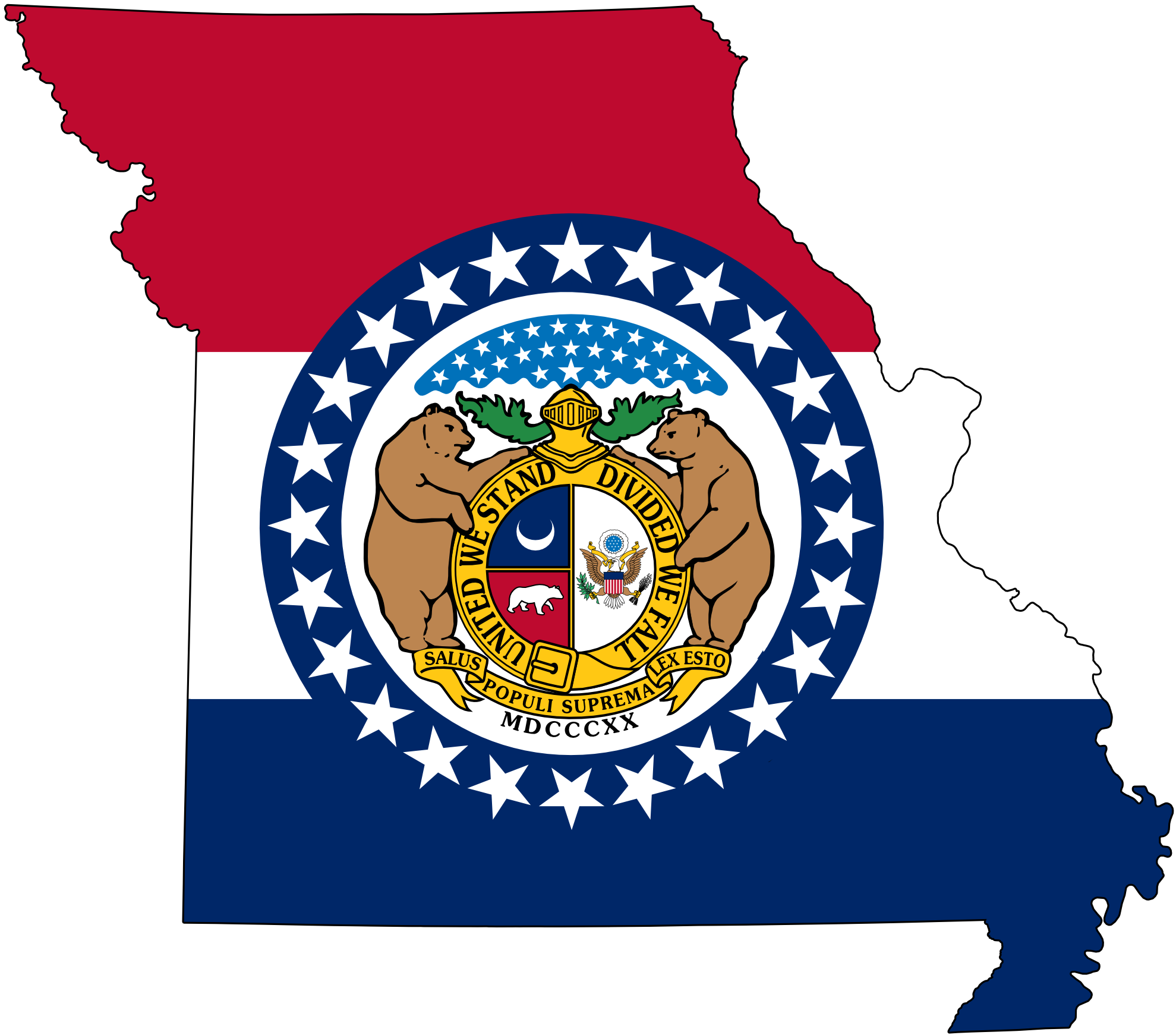


Copyright 2024 © City of Piedmont, MO • All rights reserved

